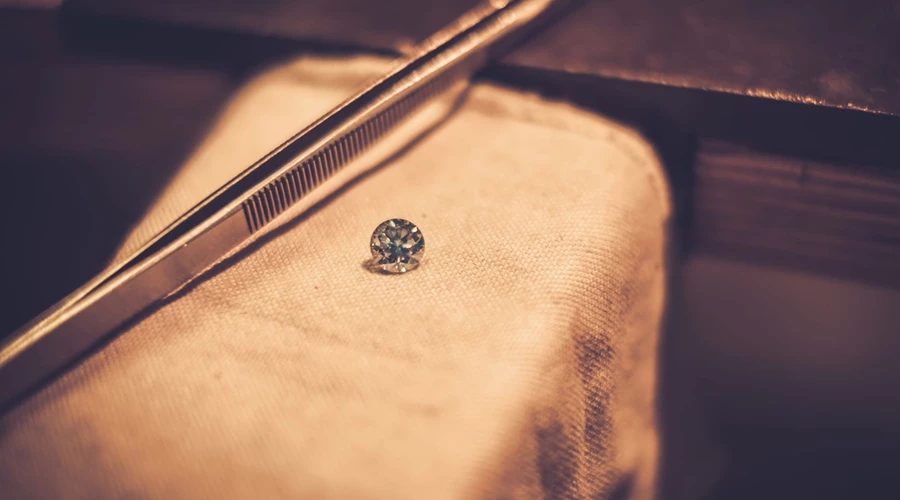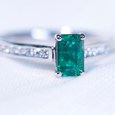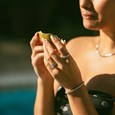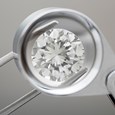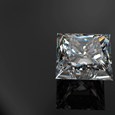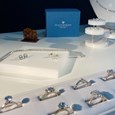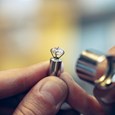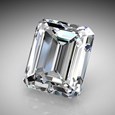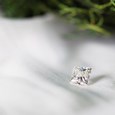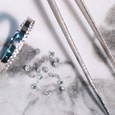Sign up for our Newsletter
Diamond Proportions, or how to buy a diamond with Va-Va-VOOM: Part 1
December 23 2022
Remember Jessica Rabbit? That hourglass figure; those curves? The way she was drawn, you could practically hear a bass drum when her hips moved.
Diamonds couldn't be more different. Hard, angular and sharp-cornered, a diamond is more likely to go ‘ting’ than ‘boom’. Yet Jessica Rabbit and a well-cut diamond have one thing in common: they’re both stunning thanks to their dynamite proportions.
Diamond proportions influence beauty more than any other factor. Understanding what a diamond’s proportions mean can give you a much better chance of choosing the right diamond on paper before you view it.
So if you want a diamond that’ll make your eyes pop out of your head, cartoon-style – read on.
DIAMOND PROPORTIONS: A CRASH COURSE
Before you can understand diamond proportions, you need to know what they are.
To start with “proportions” is not just another way of saying “measurements”. Diamonds vary wildly in size. A 5-carat diamond is obviously bigger than a 0.5-carat diamond, yet both can be perfectly proportioned drop-dead gorgeous diamonds.
When we talk about a diamond’s proportions, we’re talking about the relative size of its parts. For example, how tall is the diamond compared to its width? How wide is the table compared with the whole stone? (What’s the table? All will be explained.)
This means that, unlike Jessica Rabbit, the proportions of a diamond aren't given in centimetres or inches but rather in percentages and angles. If you’re starting to worry this will turn into a maths class, don’t. It’s far simpler than it sounds.
For now, just know that the four key aspects of a diamond’s proportions are:
- TABLE PERCENTAGE
- DEPTH PERCENTAGE
- CROWN ANGLE
- PAVILION ANGLE
This article covers table and depth percentages. (For crown and pavilion angles, see Part 2). But before we get to that, let’s explore why diamond proportions are so important.
WHY IDEAL DIAMOND PROPORTIONS SHOULD BE YOUR IDEAL
Why should you care about diamond proportions? In a word: sparkle.
As we all know, a sparkly diamond is a stunning diamond. Proportions affect light performance, which in turn affects sparkle. Let’s demonstrate:
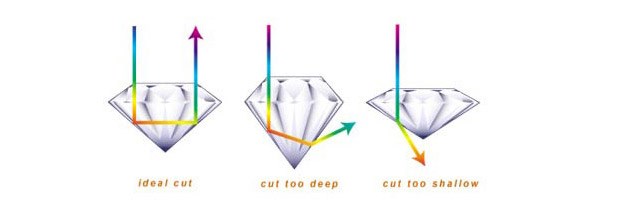
In a well-proportioned stone, light enters through the top, bounces off an interior wall or two and exits back out through the top to the viewer. Bingo, sparkle.
But in a poorly-proportioned diamond, light enters through the top and exits out of the base. That’s right - badly proportioned diamonds eat light. They’re essentially black holes.
Fortunately, it’s easy to avoid buying a poorly-proportioned round brilliant diamond. You check the cut grade. Excellent or Very Good cut grade = pretty awesome proportions. If you wanted to, you could stop there.
But what do you do when you need to choose between two diamonds that have the same cut grade or all other fancy shape diamonds? Understanding proportions can really give you the edge when it comes to choosing the best diamond available.
Now let’s take a closer look at the table and depth percentages.
TABLE PERCENTAGE
Need to know:
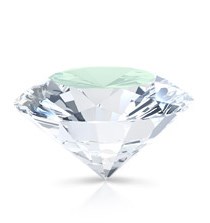
TABLE
The table is the flat surface on the very top of the diamond. If you had a big enough diamond, you could rest a cup of tea on it.

GIRDLE
On a diamond, the girdle is the widest part of a diamond.
Table percentage tells you how wide the table is in relation to the whole stone. It’s given as a percentage to make it easier to compare proportions in diamonds of different sizes. So if a diamond measures 10mm across the girdle and the table measures 5mm then we’d say its table percentage is 50%.
If you’re buying a diamond online, the table percentage is usually given. If not, you can calculate it like this:
Table width (diameter) ÷ Diamond width (diameter) x 100 = table percentage
The table percentage shouldn’t be too big or too small to allow light to enter and exit as a sparkle. (Light that hits the crown around the table is generally reflected.)
For a round brilliant diamond, the best table percentage to look for is between 53% and 61%. However, table percentages that fall outside this range aren't necessarily bad. They’re just not the best.
DEPTH PERCENTAGE
Need to know:
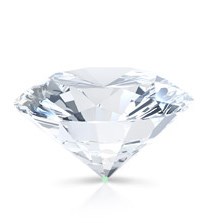
CULET
The culet is the fancy name given to the bottommost tip of the diamond – the pointiest bit.
The depth percentage tells you how deep the diamond is in relation to its width. If a diamond is 10mm wide across the girdle and measures 6.5mm from table to culet then the depth percentage would be 65%.
You can calculate the depth percentage in the same way as the table percentage, i.e:
Diamond depth ÷ Diamond diameter x 100 = depth percentage
The depth percentage is very important. If it’s low, it means the diamond has been cut too shallow; if it’s high, the diamond has been cut too deep. Either way, the light will escape out of the bottom of the diamond instead of being directed back out through the table as a sparkle.
For round brilliant diamonds, a depth percentage of 59% - 63% is considered excellent.
As with the table percentage, this range represents the ideal. A diamond with a 57% depth or a table that’s 63% isn't a dud by any stretch of the imagination. Just bear in mind that as you stray further and further from this ideal range, your diamond will appear less bright.
Coming up in Part 2: Crown and Pavilion Angles
If you'd like to know more, contact us here
-
Ethically Sourced Diamonds
-
Handmade in the UK
-
FREE Shipping Worldwide
-
60 Day Returns

